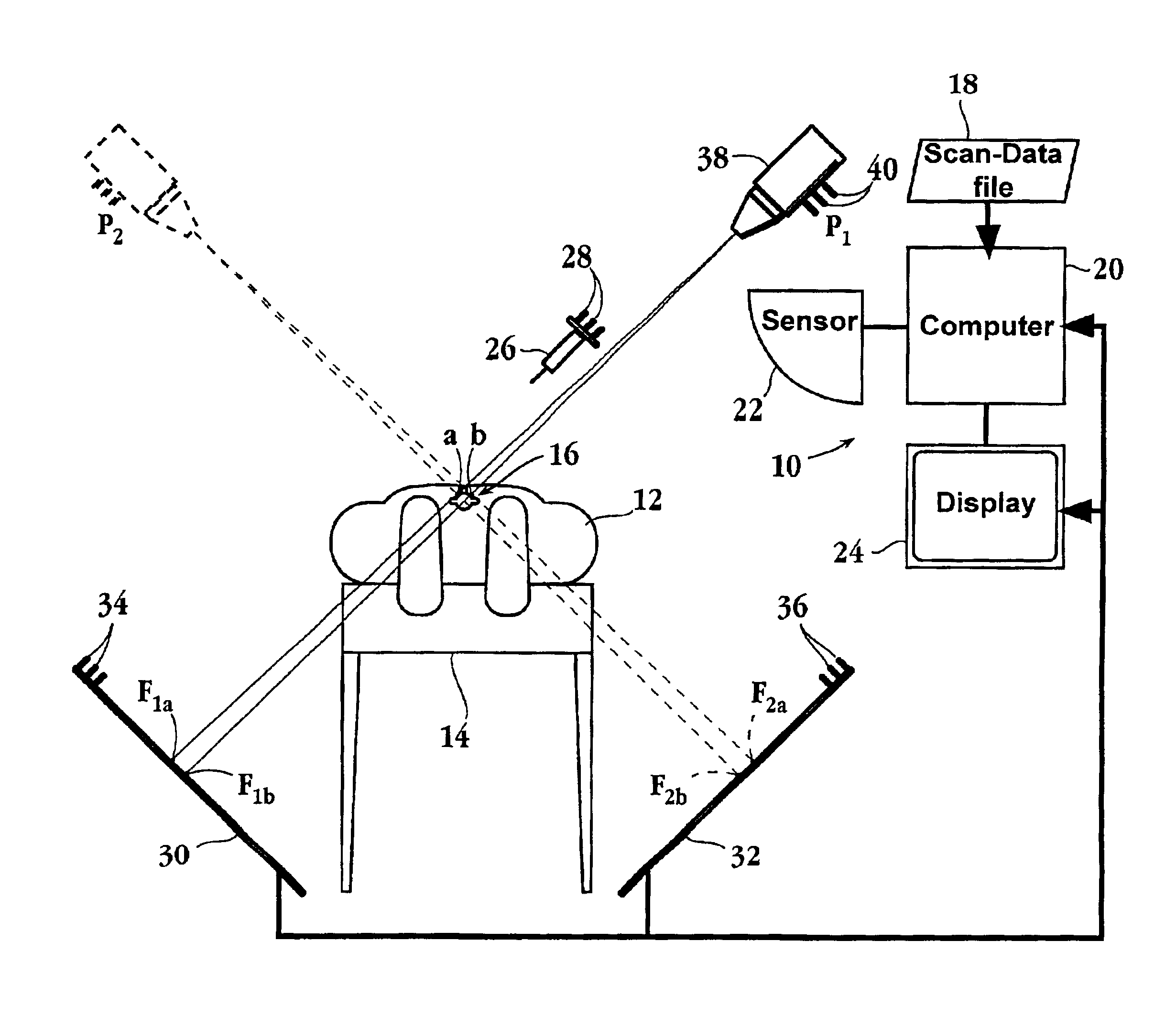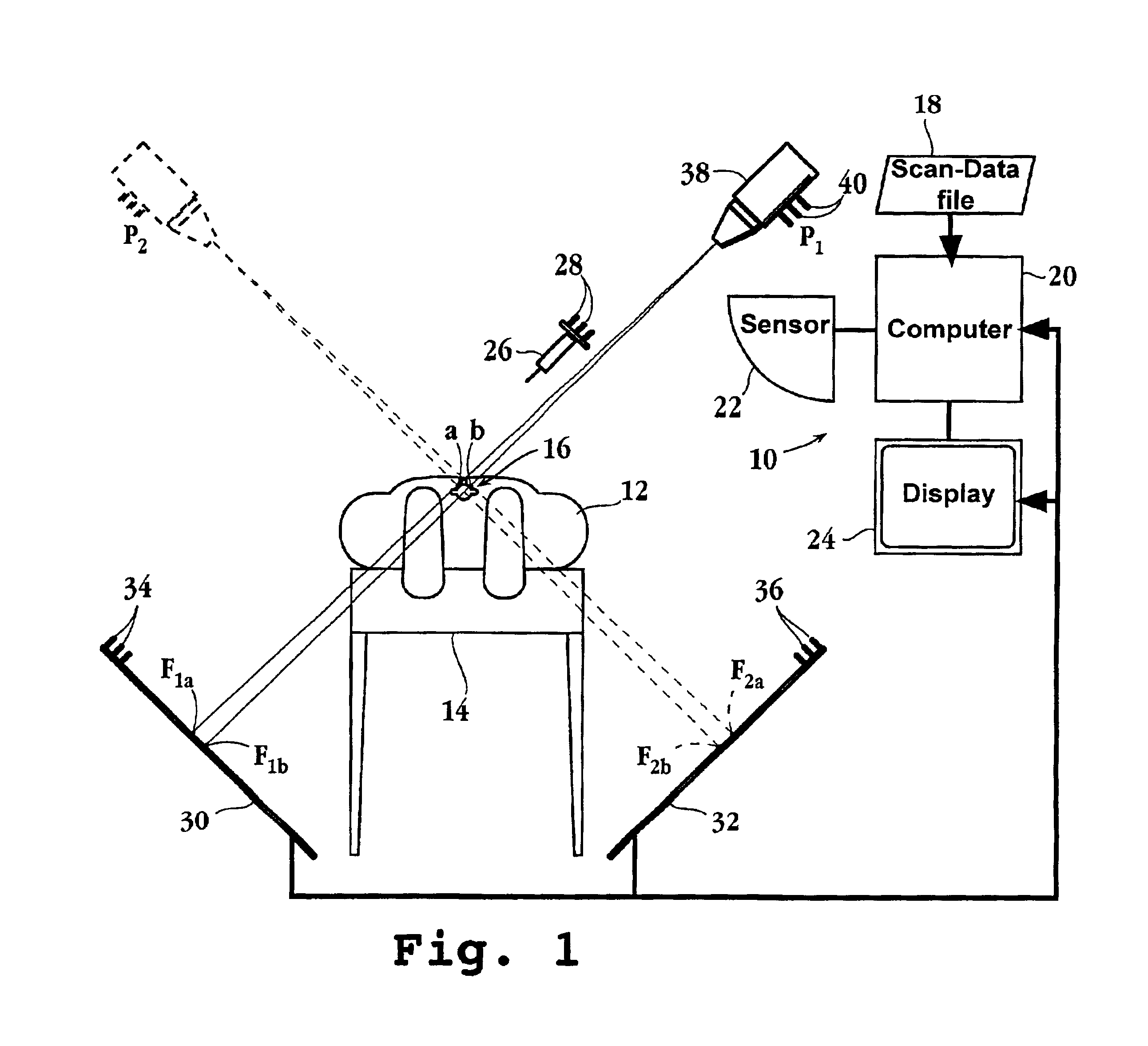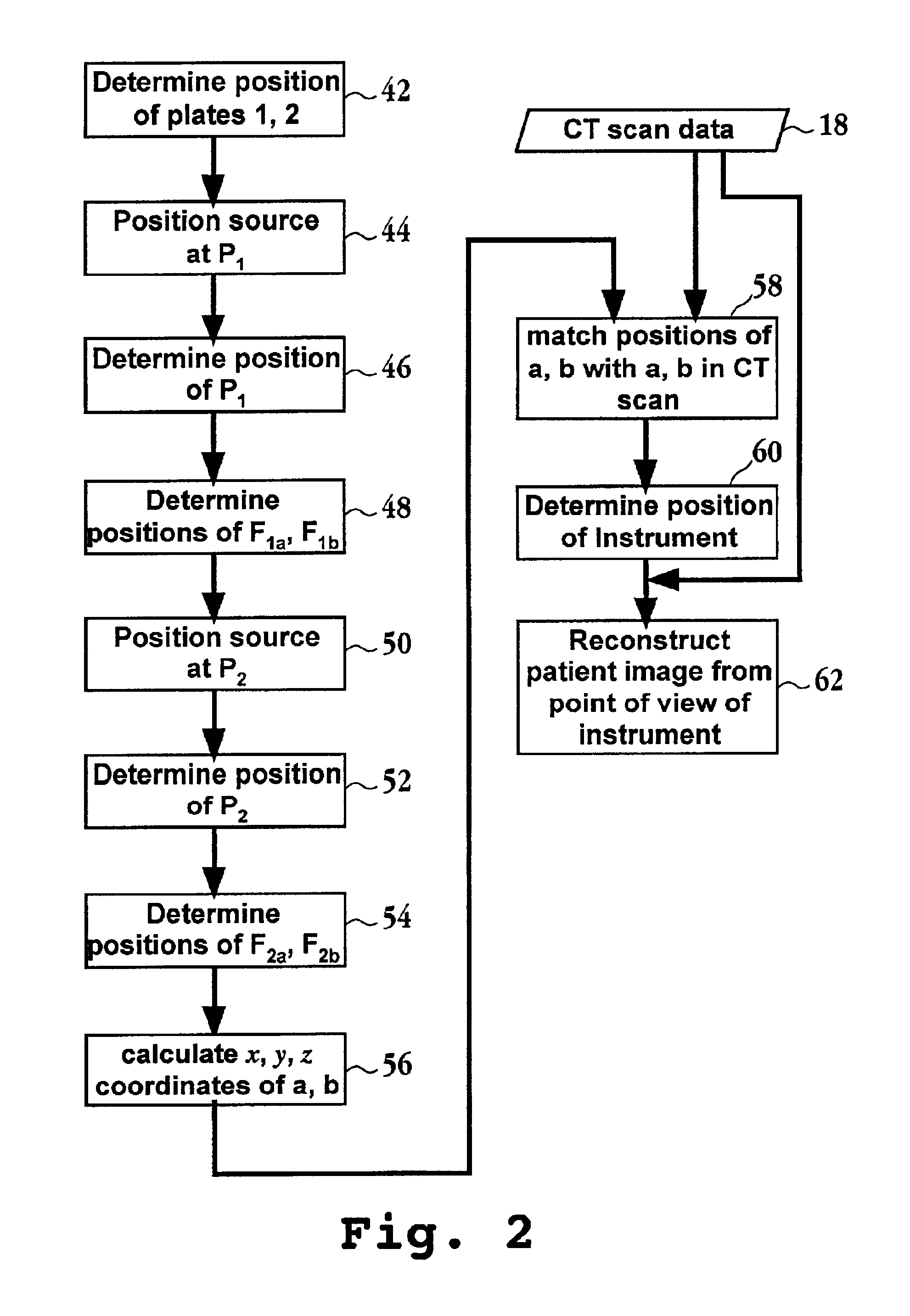Fast mapping of volumetric density data onto a two-dimensional screen
a volumetric density and two-dimensional screen technology, applied in the field of image-guided surgery, can solve the problems of avoiding the use of fiducials altogether, limiting the number of times and duration of fluoroscopic imaging, and virtually impossible to retain fiducials between scanning and surgical operations
- Summary
- Abstract
- Description
- Claims
- Application Information
AI Technical Summary
Benefits of technology
Problems solved by technology
Method used
Image
Examples
Embodiment Construction
[0026]The present invention is designed to enhance several aspects of image-guided surgery. In each case, the invention depends on or uses pre-operative volumetric scan data of a patient target region. Typically, the scan data acquired are computerized tomography (CT), magnetic resonance imaging (MRI), or ultrasound scan data, obtained according to well-known methods. The scan data are conventionally stored in digitized form in a scan-data file, for later use in the invention. For purposes of the present invention, the scan data have three important characteristics.
[0027]First, the target region (volume) that is scanned is divided into a three-dimensional voxel space, where each voxel (small volume element) typically represents an x-y element in the “plane” of scans taken along the z direction. (Voxels defined by other types of coordinate systems, e.g., polar coordinates, may also be employed). Second, each voxel is associated with an M-bit density value that characterizes the scan ...
PUM
 Login to View More
Login to View More Abstract
Description
Claims
Application Information
 Login to View More
Login to View More - R&D
- Intellectual Property
- Life Sciences
- Materials
- Tech Scout
- Unparalleled Data Quality
- Higher Quality Content
- 60% Fewer Hallucinations
Browse by: Latest US Patents, China's latest patents, Technical Efficacy Thesaurus, Application Domain, Technology Topic, Popular Technical Reports.
© 2025 PatSnap. All rights reserved.Legal|Privacy policy|Modern Slavery Act Transparency Statement|Sitemap|About US| Contact US: help@patsnap.com



